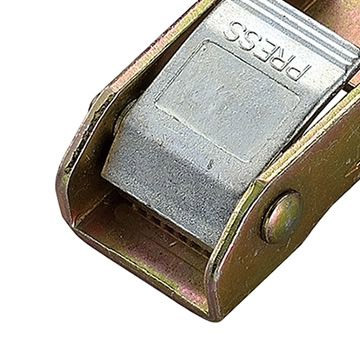external wall insulation screws
Understanding External Wall Insulation Screws A Comprehensive Guide
External wall insulation is a crucial method to enhance the energy efficiency and aesthetics of buildings. One of the key components in this system is the type of screws used to attach insulation boards to walls. These specially designed screws are essential for ensuring that the insulation remains securely in place, providing long-lasting benefits to the building's performance. In this article, we will explore the different types of external wall insulation screws, their applications, and best practices for installation.
Types of External Wall Insulation Screws
1. Self-Drilling Screws These screws are particularly popular due to their ease of use. They can penetrate various substrate materials without the need for pre-drilling, making them an efficient option for installers. Self-drilling screws come in different lengths and diameters, allowing for flexibility in choosing the right screw for the insulation thickness and wall material.
2. Plastic or Nylon Screws These screws are often used in conjunction with insulation materials that require a softer touch. They are non-corrosive and lightweight, which makes them ideal for specific applications where a traditional metal screw might risk damaging the insulation.
3. Metal Screws with Washers Metal screws, often equipped with large washers, are designed to distribute the load across a wider area. This is particularly important for heavier insulation materials or in situations where wind uplift is a concern. The combination of washers with screws helps to prevent the insulation from being pushed in or out, maintaining its integrity over time.
4. Specialty Screws Some manufacturers create specialty screws with enhanced features, such as those that include adhesive or insulation discs. These can add another layer of security, ensuring that the insulation boards stay firmly in place, even under challenging environmental conditions.
Applications and Installation Best Practices
external wall insulation screws

When installing external wall insulation systems, proper use of screws is critical. Here are key practices to consider for effective installation
- Select the Appropriate Screw Type The choice of screw should depend on the insulation board type, external wall material, and climate conditions. Consult manufacturer guidelines to ensure compatibility.
- Spacing Follow the recommended screw spacing to ensure even weight distribution and support. Generally, a spacing of 300-600mm between screws is advisable, but this can vary based on insulation thickness and local codes.
- Avoid Over-tightening When fastening insulation boards, it's essential to avoid over-tightening screws, which can compress the board and reduce its insulating properties. The screw should be snug but not excessively tight.
- Check for Corrosion Resistance Given the exposure to outdoor elements, choosing screws that offer corrosion resistance is vital. Stainless steel or coated screws are good options for preventing rust and extending the lifespan of the installation.
Conclusion
External wall insulation screws play a significant role in the effectiveness and durability of insulation systems. Understanding the various types of screws available and adhering to best installation practices can lead to optimal insulation performance. By selecting the right screws, building professionals can ensure that buildings not only meet energy efficiency standards but also provide comfortable living and working environments. Investing time in understanding these essential components is an investment in the overall quality and longevity of the external wall insulation system.
-
Wedge Anchor Bolts: Secure Fastening SolutionsВестиAug.05,2025
-
Insulation Fixings: Secure and Durable SolutionsВестиAug.05,2025
-
Full Threaded Studs: Versatile Fastening SolutionsВестиAug.05,2025
-
Expanding Fasteners: Secure and Reliable SolutionsВестиAug.05,2025
-
Butterfly Toggle Anchors: Secure and Easy to UseВестиAug.05,2025
-
Bracing Solutions for Steel StructuresВестиAug.05,2025
